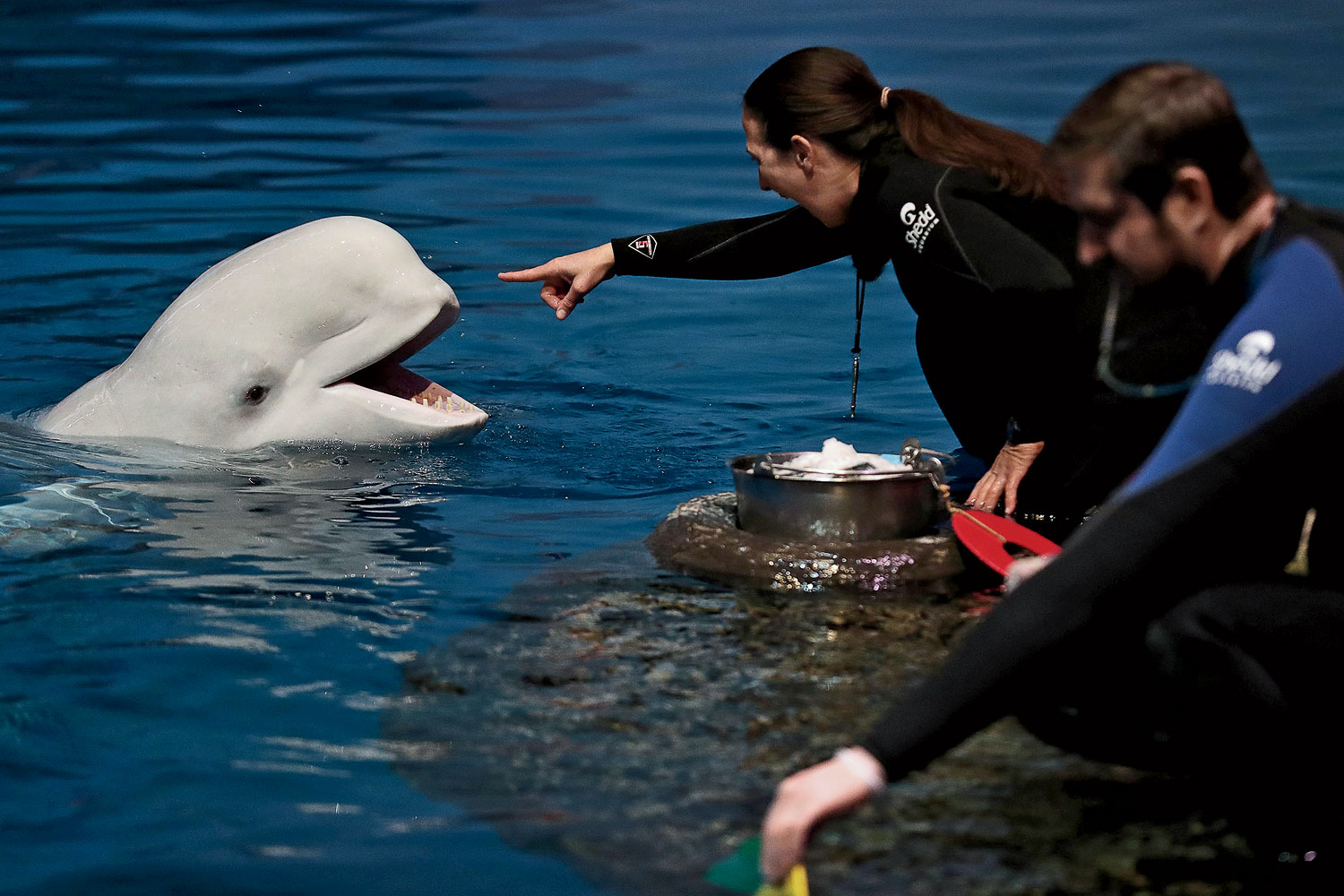"A Dolphin’s Smile Is Nature’s Greatest Deception” read a little girl’s sign outside Brookfield Zoo on May 7. The girl was one of about 10 protesters there as part of animal rights group Empty the Tanks’s worldwide annual day of aquarium picketing. More than two dozen showed up at the Shedd. The goal? End marine mammal captivity.
In the post-Blackfish era, it doesn’t seem far-fetched that local aquatic venues might one day free Willy—or in Brookfield’s case, Allie, Alison, Magic, Maxine, Merlin, Noelani, Spree, and Tapeko.
It’s already getting harder to maintain marine mammal programs: A federal decision last fall barred the Shedd from bringing in new wild-caught belugas. And SeaWorld’s announcement in March that it won’t breed orcas anymore, plus the National Aquarium’s decision in June to release its dolphins into a natural sanctuary, suggests it won’t be long before the two Chicago aquariums could consider the same—though neither indicates it will.
In June, both institutions became the first (and so far only) in the United States to be certified by the American Humane Association for the treatment of their animals. And, they argue, their programs give scientists hands-on access to animals that can’t be achieved in the wild. So how do the two facilities stack up? See below.
Shedd Aquarium
Marine mammal roster:Seven beluga whales and six Pacific white-sided dolphins
Births:Eight belugas (three died) and seven dolphins (four died) since 1991
The show:Instead of tricks, it “highlights incredible natural behaviors,” touts the Shedd. (Read: tricks.)
The justification:“Most of what is known about marine mammal reproduction has been learned by studying them in zoological facilities,” says Tim Binder, executive vice president of animal care.
Controversy:Laura Swiat of ETT says loud music during shows could damage the animals’ hearing.
Brookfield Zoo
Marine mammal roster:Eight bottlenose dolphins
Births:Twelve since 1999 (six died)
The show:Plenty of leaping and splashing (in the name of education, natch)
The justification:The zoo says the exhibit provides funding for and exchanges findings with the Sarasota Dolphin Research Program, a study of wild dolphins.
Controversy:Chlorine in the water irritated the animals’ skin, so the zoo now uses ozone exclusively.




Comments are closed.